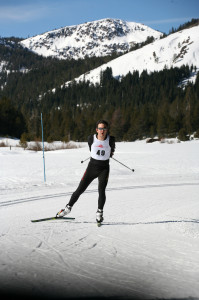No matter the time of year – optimize your training opportunity by attacking each day, from rest to specific intensity, with understanding and purposeful intention.
Winter, so-called off-season, is an opportunity to build a wide deep foundation of cycling specific fitness that allows for improved in season durability and recovery. But there is a fine balance of working on specifics while maintaining the perspective that it is off-season and time to prioritize rest as well as mental and physical diversity to fully recharge and regenerate. The key is maximizing this phase of training to develop the endurance base and efficient cycling mechanics while also emerging hungry and excited to ride, not cycling-stale.
At any point in the season, it is essential for you to work in partnership with your coach. As an athlete don’t resort to blindly, going through the motions of a prescribed training plan, but take the opportunity to understand the why of training and how you individually respond and adapt. The off-season is an ideal time of year, with no performance pressure, to develop this deeper understanding. It also presents an equally valuable opportunity for the athlete to take greater creative liberties with the training plan. This might include – performing the specified training elements but keeping it more spontaneous in nature; seizing the opportunity to do what feels and sounds right vs forcing that should do mentality; and capitalizing on a variety of endurance base cross-training opportunities like Nordic skiing, snowshoeing, mountain biking, trail running and hiking.
It is valuable to keep cycling specific elements in the training to fine tune and hone mechanics/economy of movement and cycling specific strength and power, but when possible mentally and physically mix it up on easy days and endurance days.
It is valuable to continue to remind yourself of the goals for the foundation/base training phase
- Improve in–season durability (achieving higher intensities and improved recovery) and peak race fitness
- Improve and build aerobic engine
- Improve muscular endurance
- Develop specific cycling strength
- Hone efficient pedaling mechanics
- Increase muscle mitochondria
- Increase lactate threshold
- Increase muscle glycogen storage
- Develop general functional movement stability
- Improve and maintain range of motion/flexibility/mobility
This year o2fitness devised a comprehensive season-long, systematically developed team training plan for members of the Rio Strada cycling team. It kicked off a couple weeks ago. It provides participants with a daily training plan posted on TrainingPeaks, supported by one weekly coached, structured team workout and one team endurance ride.
Thursday night team workouts, take place on turbo trainers – building that team togetherness and bonding. We use the Flower Farm in Loomis as our base camp, but also take field trips to other workout sites. Last week we swapped Wednesday for Thursday and met at the Folsom Rodeo grounds to spectate the Rodeo Cyclo-Cross. We took a night ride on the bike trail as our warm-up, and then positioned the turbo trainers and the most action-packed corner of the Rodeo cyclo-cross course. Spectating the roller derby on bikes, uber-energized the workout.
These weekly team workouts are opportunities to focus on key elements of base training, including – honing pedal stroke efficiency; economy of movement/speed skills; climbing technique/skills; specific cycling strength; tempo/medium endurance intervals; and improving in saddle horsepower and out of saddle explosive power.
These Thursday night workouts also include off-bike movement preparation, glute activation as well as functional strength. Throughout the year, cyclists (as well as all endurance athletes) need to prioritize non-sport specific functional strength in the form of dynamic trunk, single leg and hip/pelvis stability designed to improve cycling biomechanical efficiency. This functional strength conditioning also creates the safe and effective foundation of stability and movement, as we progress toward explosive plyometric strength training.
Sunday is the get out there and enjoy winter riding, with teammates training. The team meets and hits one of the multitude of world-class, rolling, ascending and descending foothill routes at a pure endurance pace.
Bottom line – we do not want to win training – we want to understand how each and every day connects to our long term racing goals, and hit each and every training day with intention and purpose. Maintain the big picture perspective to guarantee you are hungry to race your bike April through September.
 I am loving the training. Despite the fact I do not do all of it. Now, the rain!!!
I am loving the training. Despite the fact I do not do all of it. Now, the rain!!!





